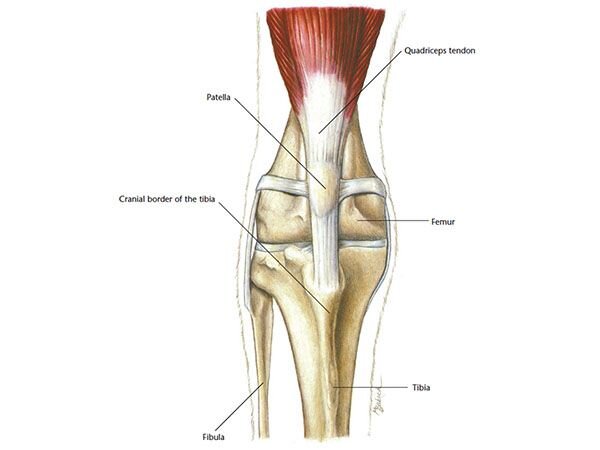The cranial (or anterior) cruciate ligament in pets is located in the knee. A rupture of this ligament is the most common cause of rear leg lameness and can be quite severe due to the slide of the shin bone when the pet is moving. Tibial tuberosity advancement (TTA) surgery is designed to change the angle of the shin bone coming into the knee to stabilize the joint. The surgery does not directly repair the ruptured ligament, but it can offer major improvements in terms of walking and decreases in lameness.
Diagnosis
We generally see pets with a ruptured cranial cruciate ligament presenting with long-term lameness and instability in the knee (stifle) joint. We’ll start with a general examination, though we may also need to perform an additional exam under sedation or anesthesia. We will need to take in-depth x-rays of the affected area to find signs of and progression of arthritis. The radiographs also allow us to make a detailed plan beforehand to help us plan a successful surgery.
Treatment
Several surgical techniques can be used to correct cranial cruciate ligament rupture. We may suggest TTA as the preferred treatment depending on the state of the stifle joint, the pet’s overall health, and other factors. The procedure is generally only performed on medium, large, and giant breed dogs, though there are some exceptions. TTA surgery is especially useful in younger pets and those who have ruptured ligaments in both of their knees. In general, the sooner your pet receives the surgery, the more likely they are to fully recover following the procedure. A ruptured knee ligament can also be quite painful for pets, which is why we suggest getting them evaluated and treated promptly.
At the end of the TTA surgery, a special plate is attached to the joint and kept in place with screws to help stabilize the area. Additional x-rays are taken after the procedure to check the new alignment.
Recovery & Aftercare
It’s important to understand what your pet will need in the months following a TTA surgery. Aside from general surgical concerns with infections and surgical site healing, there will be major restrictions on what your pet can do while recovering.
First 4-6 Weeks
Exercise will be strictly restricted for the first few weeks, including during toileting. Use a leash and harness to avoid sudden movements. We often suggest confining the pet to a small area or room using a pen or baby gate.
6-8 Weeks Out
We will see your pet for an x-ray follow-up appointment at this time to confirm proper bone healing and joint alignment. If your pet is recovering well, activity can be slowly and carefully increased.


